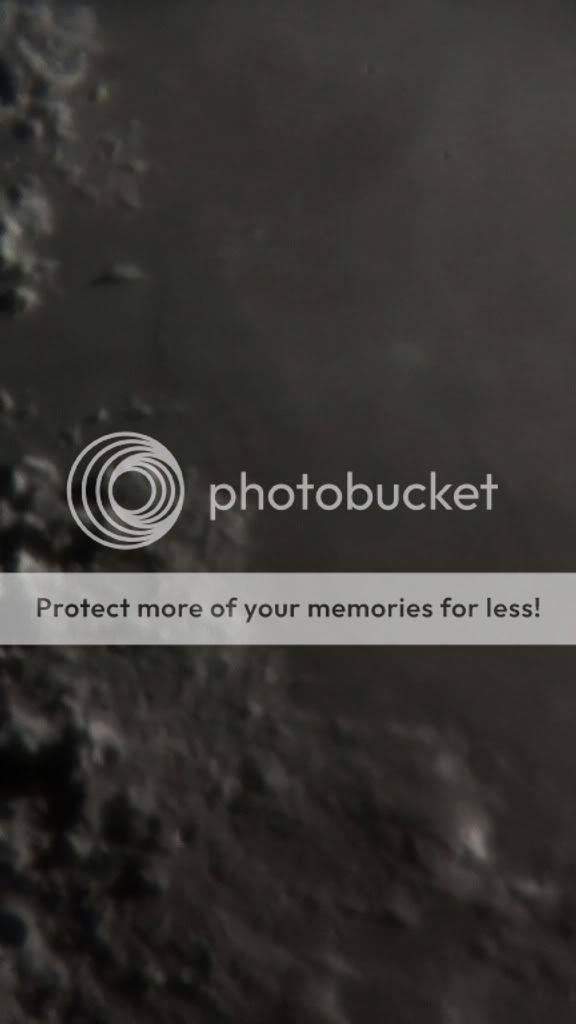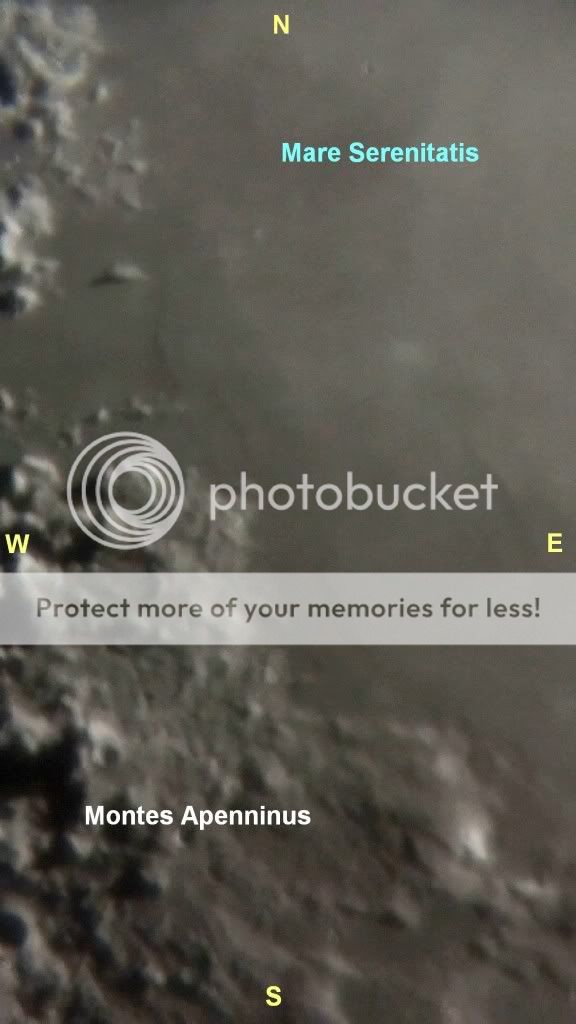In the photos above are Montes Apenninus east side. These mountains have not escaped the impacts with other bodies from space.Between the peaks can be observed some craters.
Photographer: Victor Lupu
Optics: Celestron C8-Newtonian telescope, plossl 20mm, 2x BarlowMount: CG5 (EQ5)
Device: Sony CX105
Filter: No
Date: 10/02/2011
Location: Baia Mare, Romania
Processing: 10 Sony Vegas, video captures
Montes Caucasus (Caucasus Mountains) (445 km), is a rugged mountain range located in the north-east of the Moon. It starts with a lack of surface level, in wich Mare Imbrium joins the west with Mare Serenitatis at east and extending as an irregular band to the west of the prominent crater Eudoxus. South of Montes Montes Caucasus are Montes Apenninus. The highest peaks of these mountains reach heights of 6 km, providing undoubtedly a wonderful panorama of the surrounding. Montes Caucasus were named by the German selenographer Johann H. Mädler after Earth's Caucasus mountains.
Calippus (32 km), is a small lunar crater that is located on the eastern edge of Montes Caucasus, on the north region of the Moon. It is located southwest of the remnant crater Alexander, and north-west of Mare Serenitatis.Calippus has a depth of 2.7 km and has an irregular outer rim with the outside edges toward the northeast and in particular west where there is an interior floor.
Theaetetus (25 km), is a Moon impact crater, located southeast of the crater Cassini and near the eastern edge of Mare Imbrium. It is also located west of the Montes Caucasus. In the southwest is the prominent crater Aristillus. Theaetetus has a depth of 2.8 km. The rim is polygonal shaped. There is a ripple outside and a slight increase in hight on the floor. The interior is relatively with no features.The name is given from Theaetetus, Theaitētos (about 417 BC - 369 BC) of Athens, son of Euphronius, which was a classic greek mathematician.




 Monday, June 06, 2011
Monday, June 06, 2011
 Unknown
Unknown










 Posted in:
Posted in: 


0 comments:
Post a Comment